In September 2009 the USAF retired the Final ‘F-15A model’ it was 77-098 flying with the 123rd Fighter Squadron #Redhawks.
Here is the full story written by Staff Sgt. John Hughel
PORTLAND, Ore. – On a clear late September day, Lt. Col. Steve Beauchamp strides from the flight operations’ building toward one of many F-15’s parked on the Portland Air National Guard Base ramp. Master Sgt. Mark Billmyer greets Beauchamp with a handshake and conversation as he arrives for his mid-morning flight; both make their way toward a waiting “Redhawk” jet where Tech. Sgt. Andrew Shown has already begun to prep the aircraft. As typical as any daily mission flown by one of the officers from the 142nd Fighter Wing can be, on this day one element of the routine is unusual. The journey that Beauchamp will be flying is a one way trip, as aircraft 77-098 will retire when they reach Davis-Monthan Air Force Base, Ariz., later in the afternoon. What is also unique about this flight is that aircraft, tail number 77-098 is the last F-15A/B models in the active United States Air Force inventory.
“I thought I was going to ride off into retirement when the last of these ‘A models’ would be retiring,” said Beauchamp.
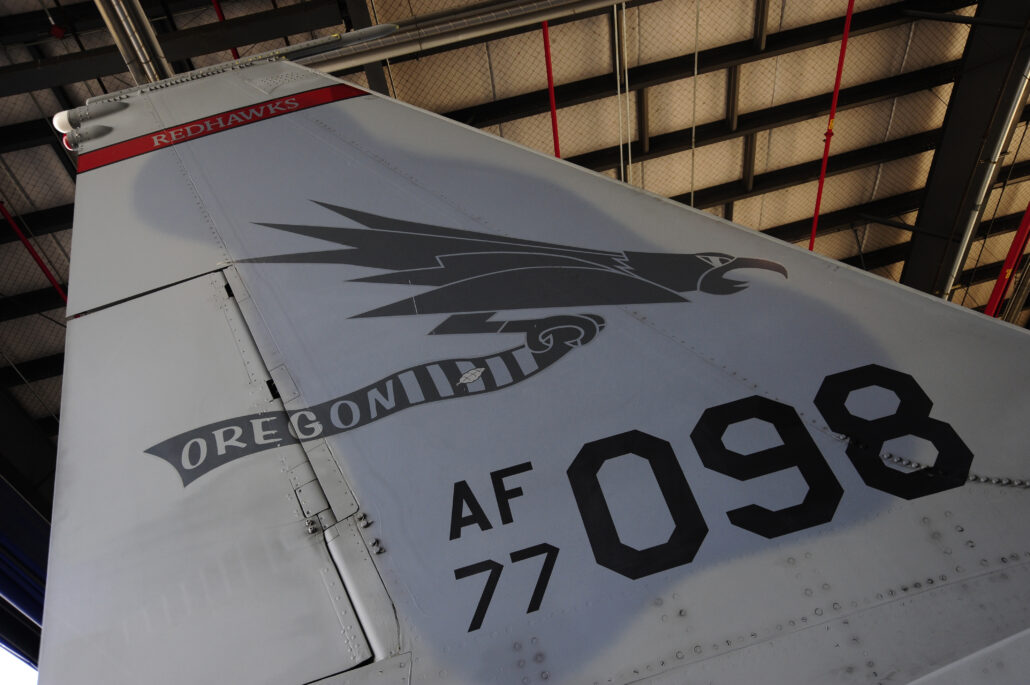
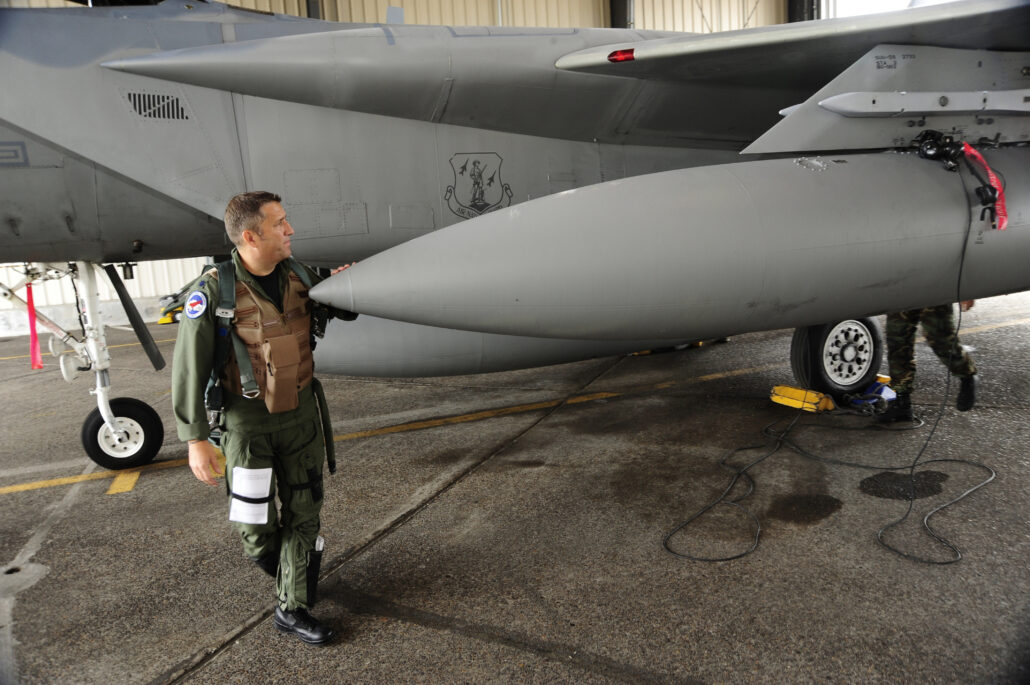
The A and B models of the F-15 have been slowly fazed out of the Air Force inventory over many years. In total only 384 of the single-seat fighters were built from 1972 to 1979. The Air National Guard has held onto the original productions until the active Air Force began to receive the F-22 Raptors and turn over their C and D models to the Air National Guard.
“It seems strange to stand here and look at this terrific airplane and know I am taking it out of service,” said Beauchamp.
Aircraft 77-098 first arrived in Portland on Aug. 1, 1994, and was one of the original Airplanes that came to the 142nd Fighter Wing during the second conversion period from the F-4 Phantom to the F-15 Eagle model. The 142nd converted to the F-15A/B aircraft in 1989-90, with most of those planes coming from the 318th Fighter Interceptor Group at McChord Air Force Base, which was being disbanded. The mission of the 142nd Fighter Wing has been to carry on as the primary air defense capability for all of the Pacific Northwest and western Canada.
During their 20-plus years of service with the 142nd, the A/B model aircraft have seen many unique missions other than just their air sovereignty alert mission.
In recent years the durability of the aircraft has been put the test with deployments to Operation Northern Watch in Iraq, as well as Saudi Arabia, Iceland and Singapore. Additional training deployments such as Red Flag in Las Vegas, Weapons Evaluations System Program exercises at Tyndall and Hill Air Force Bases sharpened the skills of the pilots flying the F-15A/B models.
The current conversion process from A and B models to the newer C and D models began in early May 2007. Beauchamp and Col. Steven Gregg, then wing commander, flew the first two C model jets from Kadena Air Base in Japan to their new home in the Pacific Northwest. During this U.S. Air Force extensive conversion process all F-15 A-E models were grounded for nearly two months worldwide in November of 2007 after a Missouri Air National Guard F-15C came apart in flight and crashed Nov. 2, 2007.
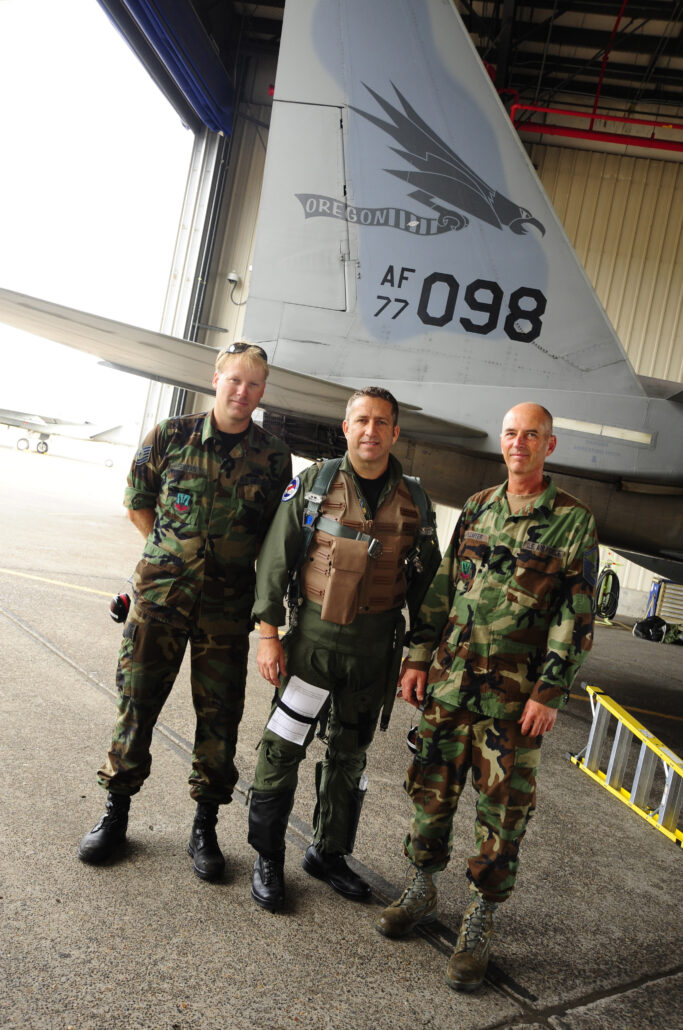
After the investigation, the Air Force found a flaw in the upper longerons of the airframe and many of the F-15C models that were to replace the older A models. More than 15 percent of the F-15 fleet inspected never returned to flight status; the rest were cleared to fly in early 2008. This slowed the conversion process and pushed back the life cycle of these older F-15A models.
As the F-15A models began to leave, the maintenance and crew chiefs had to give up airframes that had been with the unit for more than 10 to 15 years. One Aircraft in particular, tail numbers 73-089 had more than 35 years of total active service before it was retired earlier in 2009 and now will be refurbished for its new and permeate home at the Evergreen Aviation Center in McMinnville, Ore. Yet as many of the 142nd airplanes found their way to the Aerospace Maintenance and Regeneration Center in Tucson, Ariz., in the past year, the F-15C models that arrived from other active duty installations needed a great deal of attention.
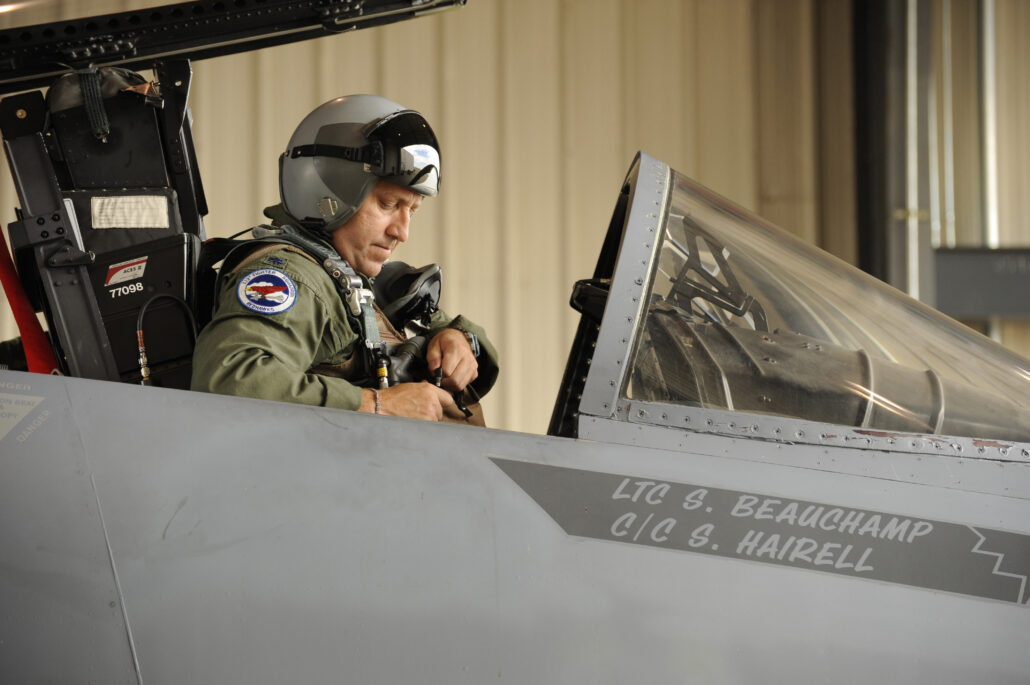
“When we picked up the Kadena jets, our team had two weeks in Japan to get these planes ready”, said Maj. Joseph Harris, 142nd Aircraft Maintenance Squadron commander. These two week acceptance inspections helped find immediate issues with the jets especially getting them ready to fly them all the way to Portland. Then in June 2007, the Air Force terminated these two week acceptance inspections. The focus on maintenance shifted back to the home unit once the newer C models arrived.
“We did receive and consume approximately 3,000 man days to help us keep as many jets as possible flying. If we hadn’t received these days, we would have had even less jets available to fly for several months longer,” said Harris. “But once they have been through our inspection dock a few times this process gets better.”
The inherit design of the newer F-15C models was one of the many challenges that the maintenance staff undertook when accepting these jets. “The learning curve went straight up,” said Shown. “With the A models it was like we called ourselves the ‘Maytag Repairmen’ because of the condition we kept those jets in.” For crew chiefs like Shown, the F-15A models were a way of life since he came to the 142nd nearly 20 years ago. This sense of ownership he and others in the Fighter Wing take on day after day, kept the fleet of ‘A models’ clean and in top notch condition all the time.
“We’ve have had visiting pilots and crews come in from other units from time to time in the past and fly our jet, and would routinely tell us they were the best F-15’s they have ever flown. Period”, said Shown.
But letting go of these older airframes is all part of the job too. “It was pretty tough to let go of good airplanes when the conversion first began”, said Master Sgt. Mark Billmyer. “But we are gaining on the C models and where we did some inspections every 200 hours we now are pushing that to 400 hours.” Billmyer first began working on F-14 Tomcats in the Navy before becoming part of the Air Guard and felt the F-15A models had a much higher technological advantage.
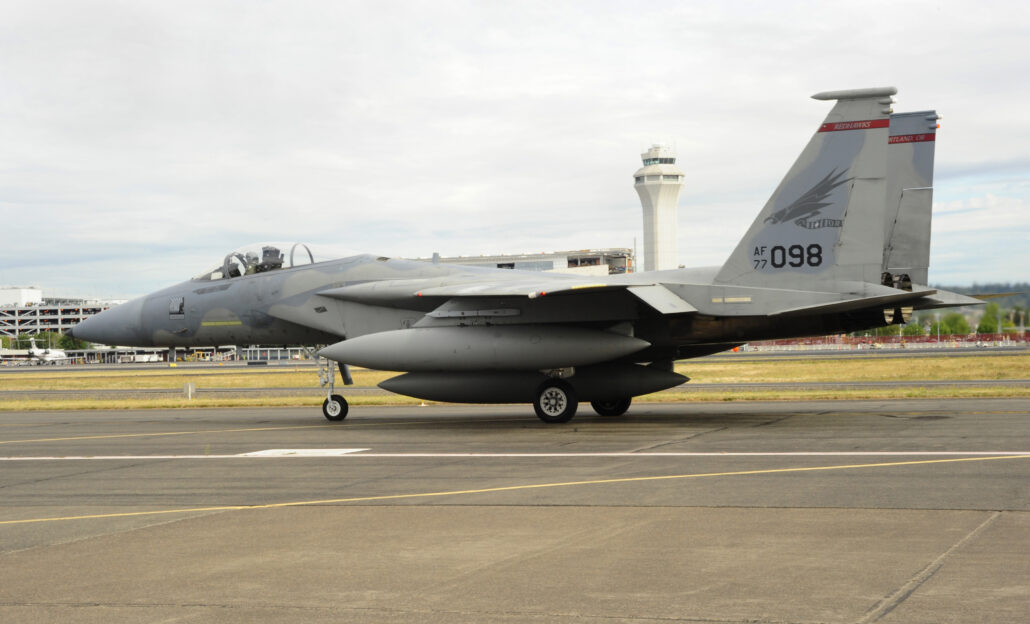
Yet as the newer C models arrive and the 142nd will see Golden Eagles make their way to Portland in the future, the sense of losing an old reliable friend was evident as the last careful preflight inspection on aircraft 77-098 was done by Beauchamp, Billmyer and Shown.
The morning was not lost on other members of the 142nd Fighter Wing either as many walked out to the flight line edge to watch the final F-15A take off into the luminous Oregon sky. “It’s watching what we have put blood, sweat and tears into and taken great pride in over many years now leave. It’s watching a part of us leaving too,” said Harris.
